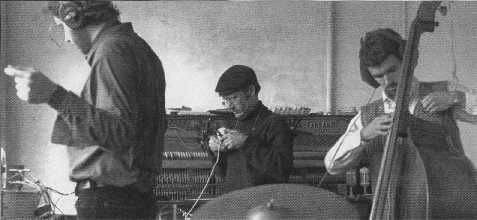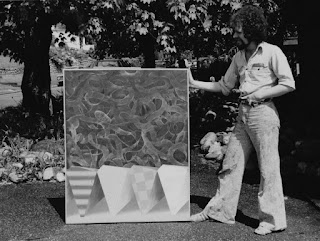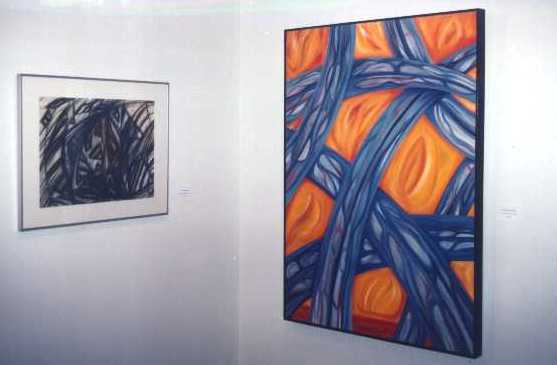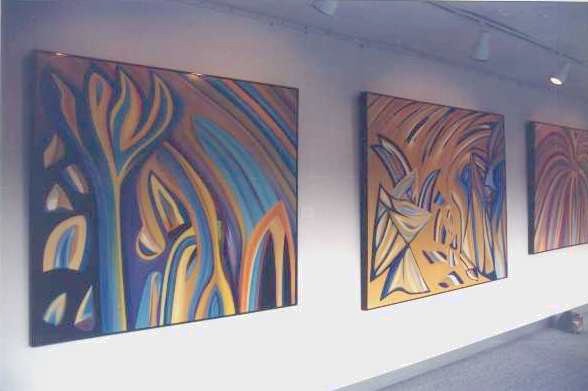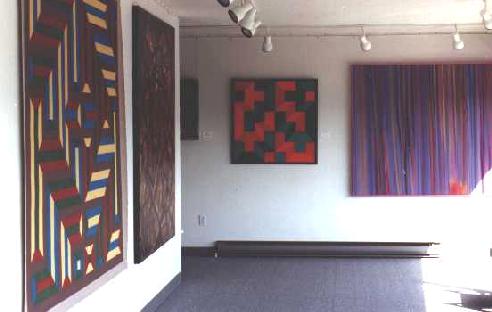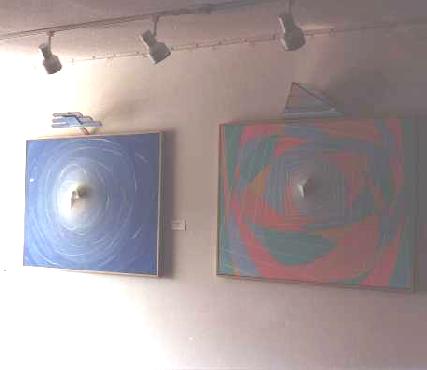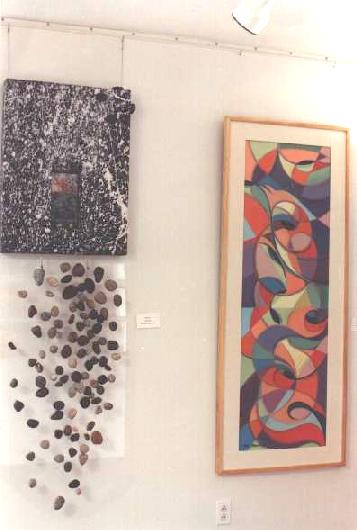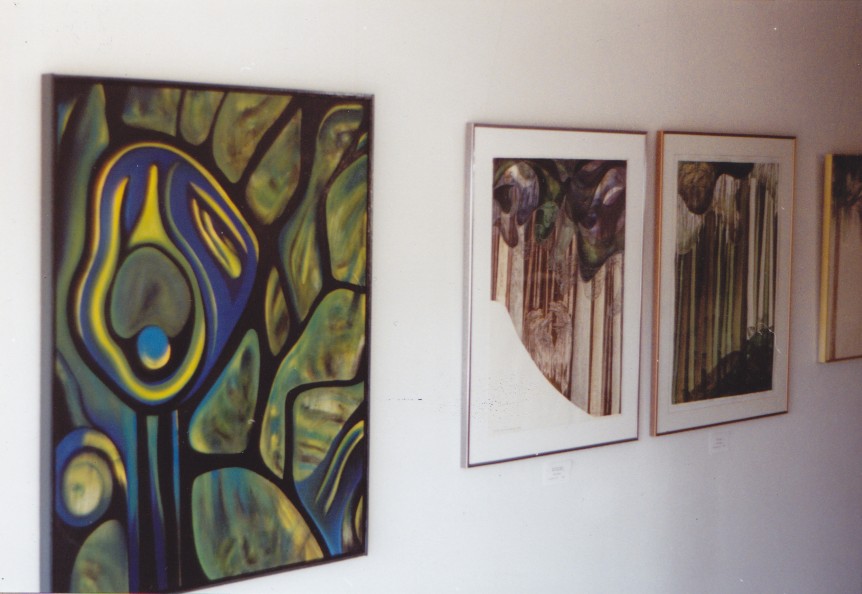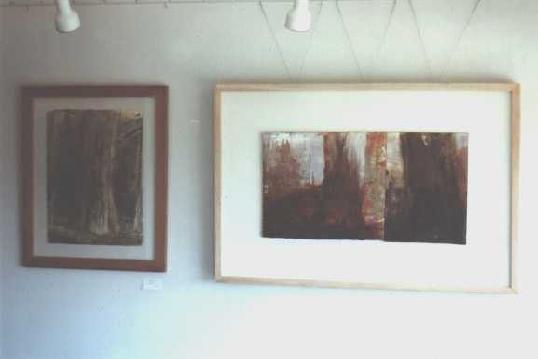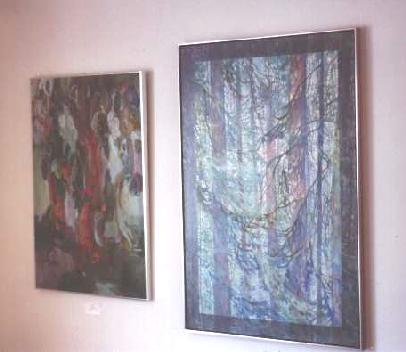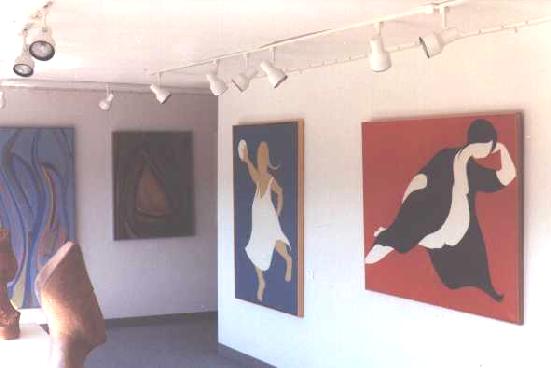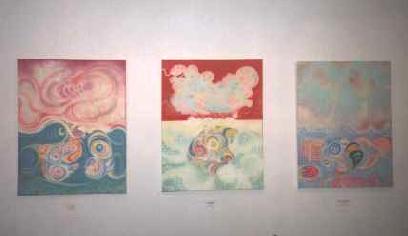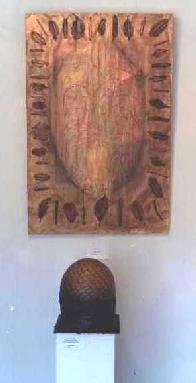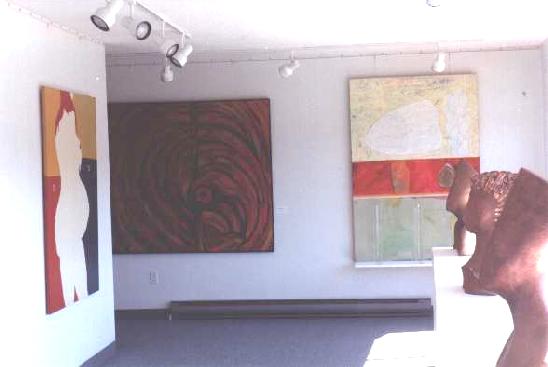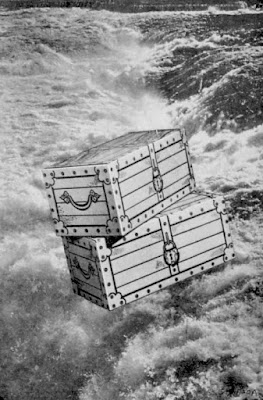Yesterday, the
Department court ordered that the body of one, Gaston Thibeaux, be
exhumed from
its grave, illegally dug at the bottom of the levee near the curve in
the
river, and reinterred in hallowed ground. Catholic by birth, and as
tradition
has it, an altar boy along with his brothers, Frederic and Darceney,
when
Gaston finally came of age and took his place in society his manias and
behavior had changed – for him the better, for us the worse; but then
that
really depends on who you are. Pimp, thief, pirate, card shark,
burglar,
bigamist, impresario, embezzler or murderer, these were the stages he
passed
through and ever returned to.
With poor parents who
eked out a living insufficient to feed and house their three sons in
clean
surroundings, despite their rundown neighborhoods, and schooling an
eccentric
affair at best, Gaston did what he could get away with whenever the
chance
arose and whenever he made that chance his own.
Quick to seize on new
possibilities, whether of female flesh or the green that spells
“dollars,”
Gaston prospered or seemed to. The latter distinction he earned by his
wiles,
yes, but also by his talent in masking; quite simply, expressing
virtues he did
not in fact possess or believe in. Appearance being the arbiter of
taste and success in business, Gaston’s business, however that
might
turn, rarely let him down.
Within or outside of
the law, his projects gained the kind of prosperity that he could
indulge in.
With lavish parties thrown for friends, sailings into the Gulf of
Mexico on his
yacht, which at 46 feet was just long enough and antique enough to
envy,
especially by those he had yet to invite, his social standing rose,
placing him
squarely in harm’s way. Make no mistake, money and prestige – which he
adored,
however they came – did offer shelter from the storms that blew through
the
city, social and natural.
From his girls he had
gathered a bank roll that opened uptown doors and poker stakes, and all
their
cigar and gin-mixed winnings. Add in what he stole from different safe
deposit
boxes, whose entrance codes he filched, and there you have it. Exactly
how he
got the codes was not something he ever revealed. As a gentleman,
though, who
appreciated irony, he always replaced what he took with counterfeits so
poorly
rendered that their falsity was clear. No one could say that he left
those
boxes empty of the bonds they formerly held; however unusable they
were.
From the real bonds,
of course, money flowed as the city grew, soggy plains on which to
build small
plantations as quick collateral against potential losses. Then there
were the
several men and women he killed by bullet and blade, a necessary
consequence to
protecting his stash.
And this went on for
quite a while until complaints from gilded families, patchworked though
they
were, hit pay dirt with the mayor, gearing up for another election. No
matter
that Gaston had played them all, mayor included, and did it so well
that they
enjoyed losing -- a rare conclusion to a
finely tuned game. But then Gaston was a pro in the art of the sham, a
cheat in
whose refinements his victims found their pleasure. Avarice was one
thing; the
fun of winning another, and yet another the despair found in losing,
which
Gaston also used to keep the entire affair from crashing too soon. He’d
have a
winning streak, lose some then win again – without fail.
When the police finally
arrested Gaston, he went to jail willingly. He knew he’d come out on
top
however his trial went. He’d blast his way out of the courtroom if it
came to
it – easy enough in those days – then vanish among the islands, large
and
small, that stretched out from the coast for a final getaway south.
Of course, the police
caught a minority on their run to Venezuela or Columbia, where
extradition
treaties did not exist. But the majority were rarely heard from again.
The
living they bought from their new country, if similar to what they
fled,
offered richer amusements. Led by endless supplies of sexual mates,
heterosexual, homosexual, young, old, fat skinny, willing or unwilling,
the
latter the better to violate, the former impassioned enough and free
enough
with their passion to violate them – premiere inducements – vied with
power
hungry avatars set to consume their holdings the moment they could. The
two
groups kept them sharp enough to savor an ebullience they sometimes
shared.
Gaston, not having the
heart to follow along blindly, prizing above all his sense of self, the
luxury
he deserved by way of it, and gaining in excess what he needed to feed
his
desires, out lasted them all.
When in his late 80s
he keeled over and died one hot, humid July afternoon, the city
devolved to a
potent mix of sweat and bitters, Gaston had not a cent to his name.
A year earlier his
gambling debts, which were themselves quite enormous, and a stock
market crash,
flattened his accounts. When he lost his several mansions and the
acreage he
had accumulated in different high-stakes crap games, that was that.
Having
enough in surplus to pay what he owed, and save something of the
respect that
others gave him, he thereafter lived on the largess of friends, who
found to
their delight that they could give as well as take, not having suffered
too
much from this or that scheme that Gaston thrived on.
As a corpse, Gaston’s
escapades, once a magnet for conversation after the usual diatribes
about race
and patrimony, faded off quickly. Laid there in the city
morgue,
just another slab of meat, it was time to forget him. Nonetheless, in
deference
to his wit and joie du vivre, those same friends who had come to his
aid when
he needed it, decided to save him from the crematorium. They took his
body by
stealth, dug a shallow grave at the base of the levee, rolled him into
it, and
covered him with enough dirt to keep the vultures, dogs, and other
scavengers
at bay.
Then the late summer
floods came and swept away the dirt above him; his right foot jutting
up from
the mud with just a bit of flesh hanging from the metatarsals -- a
mangey
blossom from a former time when Gaston called the shots.
Are we any the worse
for playing along with Gaston as he wove his cunning webs, which we
weave as we
can – taking his amusements for our own – however wealthy or poor we
are, with
those we love or hate or, more simply, live with, fearing the solitude
of
living alone?
I think not.
Although Gaston did
not in the end field a foolproof magic, in terms of morality or
conduct, the
grandiloquence with which he did it drew admirers and antagonists both,
as much
to drink from it as to magnify their own or lack thereof; his
narcissism
elevating theirs, his vanity a perfect excuse to try their luck at.
What could be better
in this world of feints and shudders that makes us bleed, and in
bleeding bleed
to death?
You first.
Niagara
Honeymoon
That night, unlike
other nights, I woke near dawn.
I knew this and that’s
all I knew: I had exhausted my luck. I lost. I was done.
Write me a letter when
you get there. That’s what you told me. I didn’t. Time had morphed into
wicker
Esperanto on Elba. Twilit June settling on the island; all that heat
and dust,
the tide, those sharp rocky beaches. As if I were nowhere, the idiot
neant
in a face struck by coffee, a face in stark hot despair.
Was this a dream, my
dream, despite my desire to forget it: Scene 3 -- the lip of the crag,
waters
ragging; whipped by the spray, toppling over…
I want to keep you
close, superfluous, paltry...
Tintype binoculars
wobble along the transept
There they are again:
yellow sheep shivering under fluorescent bulbs.
Through that doorway,
the slaughterhouse
.
Niagara honeymoon;
that’s what the brochure said. I held it up to you, above me, your face
the
face of the moon.
But it was our face,
not mine, that cinched to its nautical height the fictive flood, which
you
gave, breaking apart, your lips curling, teeth glinting, a nose like
some
shattered upland headstone.
Hope?
No hope.
Don’t get me wrong. I
just don’t like charades. And in truth, I don’t like you.
I never did.
Ritual
Suddenly, as if the
light shifted into blue frondescence, I wandered back to that precious
moment
when I was born, emerging head-first from my mother’s cunt, slippery
wet, first
eyes opening, eternity my concubine years later when I found in a kiss
that
fateful lock, the transept where time returns to beginnings.
That was the start in whose
slow violin clichés…
There were tears
pinned to stars that flowed over us, night to night to night.
Take me in your arms,
airless fairground, subtitle in which “I” am little more than a mirror,
a
mirror of wool split at the seams.
Take me and forget me.
You will be better off if you forget me. You might even reclaim the
woman you
were before I squeezed your liver and raised your breasts to
Ecclesiastical
heavens.
But maybe, just maybe,
that’s what you want.
That, and an end note;
the beginning with no end.
This fur, this shadowy
furrow that flees from my feet…
Venus on
the Moon
They tell me, in the
song, that a woman cries out to the moon rising above a glimmering
lake. And as
the moon rises to its perihelion, the woman in the song opens her arms
to the
light that falls from the moon. But her sorrow remains. There is
nothing that
moonlight can do to calm the woman, and her cry extravasates.
They tell me that a
woman will sing this song when her husband or lover has died or left
her for
someone else. The longing and hurt in the cry that compels the song is
not
something that singing can absolve either.
She sings of cruel
truths and fickle passions, And the anger that scuttles her heart is
relentless
and useless.
They tell me that
after she sings this song, the grieving wife, the wounded lover,
understands
just how much she has lost; gaining this loss that undoes her.
They call this song
“Venus on the Moon,” and no one ever wants to sing it but they do. Things
happen
They
sing it.
Vindication
of
Species
I don’t want to say
anything, and this has nothing to do with poetry. I am sitting here in
the nude
on a hot humid summer night. The fan is whirring. The streets are
quiet. I am
tapping on these keys that make letters on a white screen. There is
nothing more
here. No hidden significance, no sur-text, no latent emotions, just
this
tapping. I will be doing this for the rest of my life. What more can I
say? The
words come. Simple quotidian words, neither rushed nor slow they come.
When this, our
species, is at its end, I can assure you that someone will be composing
words
and watching them turn into vapor…
.
Now my wife is getting
ready for bed. And when she lies down, nude, like me, she will be
another word.
Not one I have written but one she has written, for herself, for her
son, for
her sisters, her mother, brother, friends, and all those students that
she
teaches. She will be the word that they form in their mouths when they
speak of
her.
The same for me.
Is this vindication?
Perhaps it is. Then
again perhaps it isn’t.
The Door to
Infinity

The door to
infinity
opens to a corridor that runs below the street; a walkway for
pedestrians, some
of whom are asleep, some of whom are awake. Whatever state they are in,
when
passing each other they provide for each other. They emit whatever
distinction
they carry with them – a dream perhaps when sleeping, a memory perhaps
when
awake -- and absorb another’s. Their passing also charges a surplus to
the
interchange that keeps the corridor in tact -- for them and for other
pedestrians to come.
Now the corridor is
wide enough and high enough to allow pedestrians to pass each other
without
incident. At the same time, its construction – by whom or what agency I
cannot
say – places those within it at least close enough to enable the
interchange. A
brief shiver that traverses the shoulders, neck and head signals the
moment.
Point of view also plays into this, as does fantasy. Tales tell of two
pedestrians -- one coming, one going – who suddenly merge, separate and
continue on their way. Whether or not they do merge, and what happens
to each
having merged, is certainly a question to resolve.
That the structure has
existed for millennia, very much part of our history, is reason enough
to
celebrate. Not because “infinity” is a place a pedestrian can reach and
say,
definitively, this is where I am; this, my infinity, is also yours.
Rather, the
age of the corridor, its prestige in society, the various cultural
forms that
it gives birth to – in scholarship, the arts, literature, music, etc. –
the
reciprocal coming and going, the near tidal increase and decrease of
pedestrians in the corridor over time give to us a continuity we simply
can’t
do without; or haven’t up to this point done without -- which is
probably a
more truthful way of putting it.
That all this occurs
below ground is another inducement for wonder, especially because above
ground,
on the street, amidst the quotidian Hurley-burly, that other place,
unseen yet
poignantly felt, attracts, no matter how “down there” it is – as though
submerged
lateral movement had acquired a marvelously rich resonant charm in
itself, and
in which and by which we are able to live just a little more intensely.
Recently, an effort to
rationalize access to the corridor by mapping its aboveground entrances
has
largely failed. Once identified, a doorway thereafter vanishes as if it
weren’t
there at all and, in fact, had never been there. I suppose these
occurrences
speak to factors in the infinite that elude us, derived from yet
unexplained or
ever inexplicable encounters.
Nowhere to be found
after having been found, the door to the infinite finds us when we need
it or
when we least expect it. And when it appears, there is every reason to
open it
and begin a descent as others, having ended their walk, ascend,
re-entering a world
that they can now revive.
Dance of the
Infidels
In a smoky room on
Manhattan’s west side midtown, two pianists ponder the bridge to a trim
new
tune. It’s late afternoon and the sun angles in through a break in the
curtains. One is sitting on an old leather arm chair, eyes closed,
humming the
introduction. The other is at the piano tuned to notes that he plays in
silence, fingers poised above the keys. He does this when he’s unsure,
yet
listening to the urges rising within him; urges that he usually
transforms so
well into music.
This goes on for quite
a while until his colleague snaps his fingers, stands up, steps to the
piano,
leans down and plays two chords. They sound awkward enough when
isolated but in
tandem add up to something that the tune can use; as much to offset its
harmonic as to tip the rhythm forward.
The originator of the
tune then jots down the notation, looks at it for a moment, whistles
between
his teeth, lips barely open, and plays the thing out.
That night, after the
first set at the club, while in the dressing room, the pianist tells
his band
that he’ll do the first song solo. It’s a new thing he’s written and he
wants
to try it out.
“I’ll play it. Then
you all follow, drummer, bass, sax, trumpet. We’ll do the repertoire
but start
up in that order: drum solo, bass and drum duet, trio, quartet. Take as
long as
you want. Then I’ll join in.”
They have a few
drinks, smoke a cigarette, snort some coke, talk a bit with several
journalists
who’ve dropped by with their ladies and lay back for a few more
minutes. Then
its curtain call.
The pianist walks on
stage, sits down on the piano bench, hands in his lap and waits for the
crowd
to quiet. He waits a little longer, placing his hands on the keys. Then
he
begins. When he gets to the bridge he realizes again how perfect it is;
just
what the tune needed; keeps the opening and closing sections
off-balance enough
to entice deeper listening. And he plays on as he wrote it: for a
memory, one
of several memories, that kept returning a few afternoons just as he
was
waking. Whether they were real or not, formed by events he experienced
in sleep
or by day, when he was conscious enough to know he was awake, isn’t
something
he can say.
He doesn’t split hairs
on such things either. He accepts them for what they are and how they
present,
and enjoys or dislikes them, or some portion of both, then moves on.
Be that as it may, he
senses that this memory, those memories, orbit about a dreadful sun
that burns
up through a vortex composed of clouds, rain, dust and bits of
petrified
lightning whose thin blue magnetic borders crackle lowly.
Amidst the centripetal
force of the vortex, which he no doubt creates, if only to stabilize
the tale
that this memory, these memories, tell, he sees this: He and his wife
are
walking along a trail beside a deep gorge. A body of water -- river,
lake, or
pond; it’s too small to be a lake from
so high up yet it could be – glitters far down at the
bottom of the gorge. Transfixed by the
glittering light reflected off the water, they forget where they are.
The trail
climbs and falls, turns and rises again toward a summit as far above as
the
water in the gorge below.
Sudden cool breezes
appear and vanish. Time escapes them. Their thoughts dwindle to the
regular
sway of their walk, the faint signature of their clothes rubbing
together, the
shallow pulse of their breathing. It is as if they have been here for
as long
as they have been alive. It is as if the trail, centuries old, were a
medicant
medium and they its servants. It is as if the scene they give birth to,
this
scene from that memory, these memories, conveys them to a second life,
a
separate parallel vivacity that in sharing, he absorbs, and as he does,
she does,
along with the scene from that memory, these memories.
It all happens ever so
slowly.
He knows then that
he’s been playing, that he is playing the new tune he wrote with that
bridge
his colleague came up with, and that the entire thing is just about to
end.
He ends it, sits up,
folds his hands into his lap and closes his eyes.
The audience, first
silent, not knowing how to respond, stunned a bit by the journey the
tune has
taken them on, breaks into scattered applause.
He swivels around.
“Dance of the
Infidels,” he says, “a new tune.”
Then the drummer walks
on with his sticks and brushes, sits at his kit, pauses and starts in…
Gregg
Simpson
and Allan Graubard
Bowen
Island, BC; / New York, NY
.About
the Writer and the Artist
Allan
Graubard’s poems, fiction, theater works, and literary and theater
criticism are published or performed in the U.S., Canada, Brazil,
Chile, U.K., and the E.U., with translation into numerous languages. He
has appeared as reader, guest artist, and lecturer in the U.S.
(New York, Washington D.C., New Orleans and Lafayette, Louisiana,
Wesleyan, Connecticut, Los Angeles, San Francisco, and Boulder,
Colorado); Canada, (Toronto, and Montreal); U.K. (London and Oxford);
Croatia (Dubrovnik and Hvar); and Bosnia Herzegovina (Sarajevo).
His
books include: Into the Mylar
Chamber: Ira Cohen, Western
Terrace, A
Crescent by Any Other Name, Targets, And Tell Tulip the
Summer, Roma Amor, Fragments from Nomad
Days, Ascent of
Sublime Love, and more. He is co-editor with Thom
Burns
of Invisible Heads: Surrealists
in North America – An
Untold
Story.
Theater
works include: For
Alejandra, Woman Bomb/Sade, and with
Lawrence D. “Butch” Morris: Modette
and Erotic Eulogy.

Born
in Ottawa
in 1947, Gregg Simpson grew up in the rainforest environment of the
west coast.
His work has been exhibited in museums and galleries in Canada, the
U.S.,
Europe
and South America and is included in over 100 private and public
collections internationally.
His work has been included in the major exhibitions and books on
ontemporary
Surrealism.
In 2012 and 2013
a retrospective of his work from 1970-’75 toured museums in Spain and
Portugal.
In May, 2000 he had a solo exhibition in a castle in Italy which became
the
subject of a BRAVO TV television documentary, A
New Arcadia, The Art of Gregg
Simpson:
www.greggsimpson.com/Videos.html
Simpson
works in
the tradition of abstract surrealism. His paintings combine automatism
with
elements of landscape and the figure. They are improvised from simple
charcoal outlines
and then combined with the direct application of paint onto raw canvas.
The
meaning of the forms he creates changes with each viewer.




